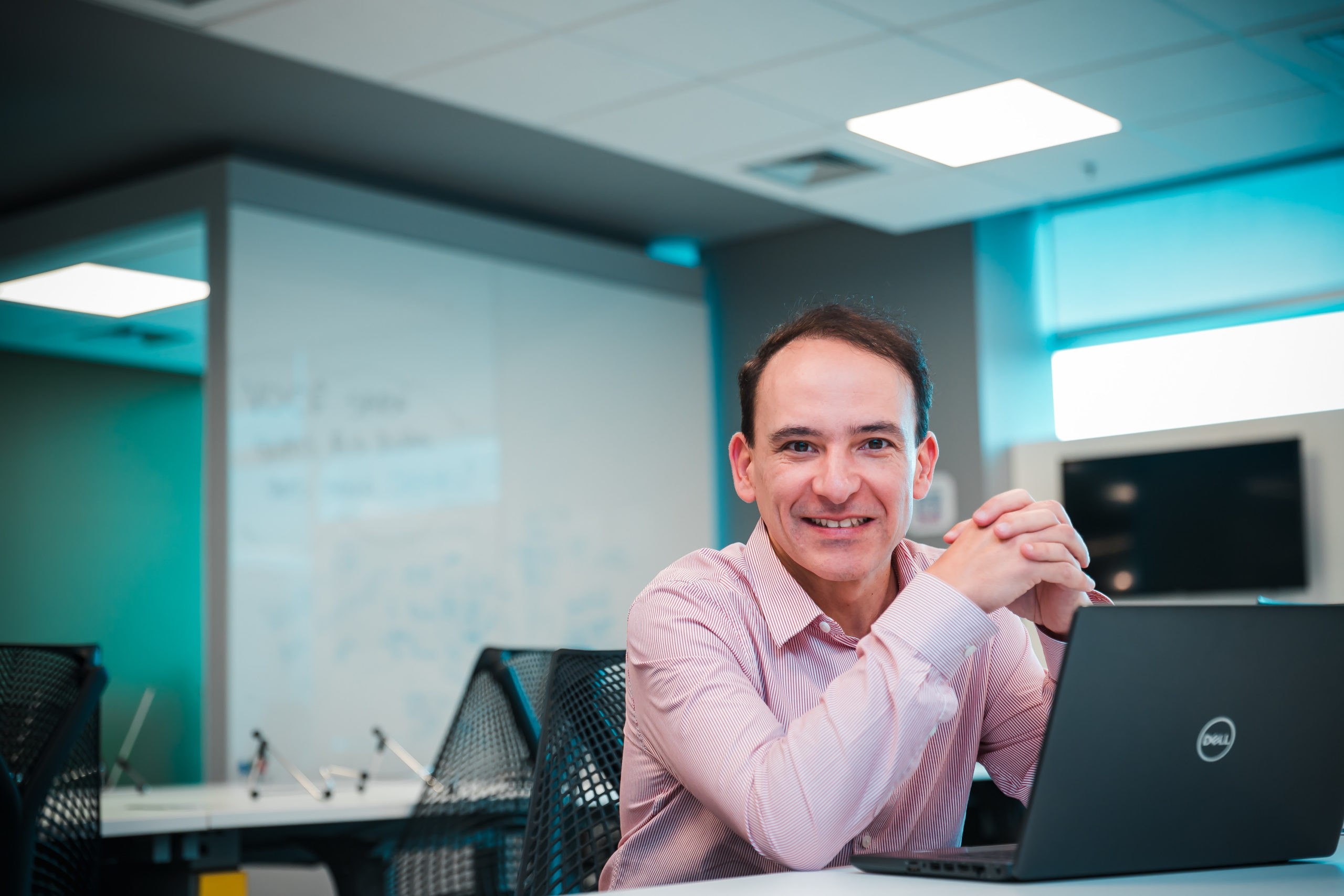 *By Julio Guedes
*By Julio Guedes
I started to be interested in statistics in childhood, which might sound a little strange because this kind of exact science was not popular with children. I always liked numbers and sports, so I started doing manual calculations related to football around the age of 10. This is how I joined two great passions. Here is the "crux of the matter".
I identified the clubs that won or lost the most, who scored the most goals, among other issues, and I developed on that. Nowadays, several sports use statistics in their strategies and there are even virtual football games, which are very successful among Brazilian fans (I am one of them, by the way).
Well, when it was time to go to college, I chose the Statistics course, but I still had no idea what exactly I would do and how I would work. I usually say it's an easy course to enter and difficult to leave. Of the 70 students at the university, only two of my class graduated the year they graduated, 1994.
At first, I had no idea what life as a statistician was like. Most students fall by the wayside in the first class, unlike today where there is a lot of content on the internet and anyone who wants to arrive at university already knows what to expect during and after the course.
In the last year of college, I did an internship at a technology company, a very productive professional experience. The company made laptops, and there was a strict process in place to verify that parts were working before selling the equipment. My role was to do quality control through tests that statistically proved whether the items would hold up to the warranty or not.
In 1995, after the internship, I worked for about 4 months with a former college professor in quality process consulting. During this period I got to know another side of the corporate world, visiting industries and smaller companies as well.
In the same year, I started working in a bank with management information systems (MIS). It wasn't a statistics sector, but I had the opportunity to know the numbers and generate insights.
A few months later, a statistical area for credit was created manually at this bank. I was the second statistician to join the department, which started from scratch. After 3 and a half years, I became a manager and did what I liked best: working with statistical modeling.
At the time, there were many credit analysts manually evaluating who could open a bank account and who could not. We started making credit score models and, with that, we were able to automate most of the processes. Banks began lending more and cutting losses.
Upon completing 13 years at the bank, he had already worked in several sectors, including the credit area for financing vehicles and real estate. I spent 1 year as a credit superintendent and managed projects related to credit cards with a large team.
In March of this year, I completed 12 years at Serasa Experian! I joined as a senior manager in the area of products related to portfolio management and collection. I held the position for only 4 months, as a chance arose to participate in a new selection process within the company for a vacancy as a senior manager of Analytics. It was a selection with several stages and I competed with colleagues in the market. I ended up being selected, I evolved in the company and today I am Director of Analytics.
It is part of my routine to deal with large numbers and think alongside a qualified technical group about how we can arrive at an ideal path. I believe that “by crunching the data” we will be able to surprise our customers and internal teams. I lead a team of 130 people and I have managers who are directly with the team, but I have a daily concern about listening to internal customers. I also listen carefully to external customers, digest the information and present it to the team, making the wheel turn, improving performance and results.
It is an intense day-to-day debate on issues that need to be resolved. What keeps me motivated to participate in several potential problems that end up becoming opportunities and that challenge me to prepare myself to make a constructive provocation, such as questioning why we are doing a certain thing. I see how this posture helps people to develop when they put things in another light.
Data is available to everyone, but the way you work with the information is different. If you give a base for 10 people to evaluate, it is possible that many different answers will come up. I'm happy when I see this, as the ongoing discussion is great for getting the best out of the data. I believe that all people and companies need to understand how statistics can help them in their daily lives.
1 year ago I was invited to be part of the Risk Committee of the FGC (Credit Guarantee Fund), an important body that guarantees investments of up to 250 thousand reais for all Brazilians in each of the banks. The FGC needed credit and analytics knowledge, so I accepted the challenge. Another new stage in his professional career in parallel with his role at Serasa Experian.
Analyzing the data of my trajectory, I see that entering the faculty of statistics was my best decision. A great goal and believing in Brazil in this World Cup with a lot of statistics being used to help our selection!!!
*Julio Guedes is Director of Analytics at Serasa Experian
Notice: The opinion presented in this article is the responsibility of its author and not of ABES - Brazilian Association of Software Companies













